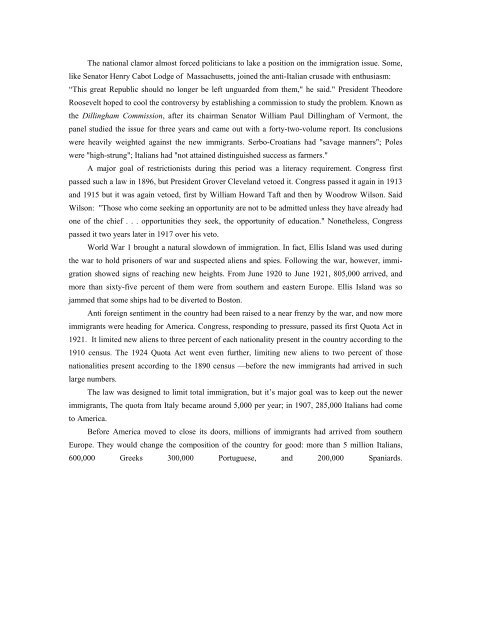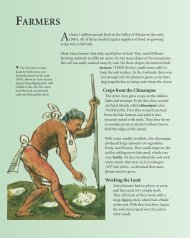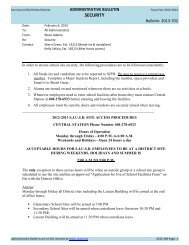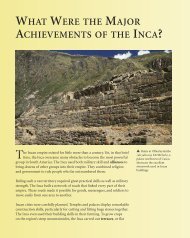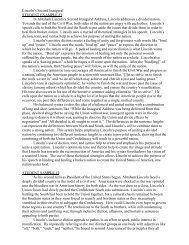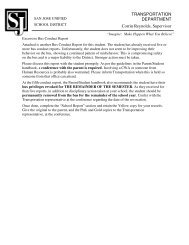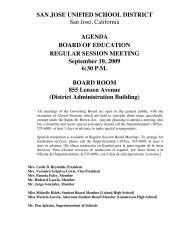Introduction to Immigration
Introduction to Immigration
Introduction to Immigration
Create successful ePaper yourself
Turn your PDF publications into a flip-book with our unique Google optimized e-Paper software.
The national clamor almost forced politicians <strong>to</strong> lake a position on the immigration issue. Some,<br />
like Sena<strong>to</strong>r Henry Cabot Lodge of Massachusetts, joined the anti-Italian crusade with enthusiasm:<br />
“This great Republic should no longer be left unguarded from them," he said." President Theodore<br />
Roosevelt hoped <strong>to</strong> cool the controversy by establishing a commission <strong>to</strong> study the problem. Known as<br />
the Dillingham Commission, after its chairman Sena<strong>to</strong>r William Paul Dillingham of Vermont, the<br />
panel studied the issue for three years and came out with a forty-two-volume report. Its conclusions<br />
were heavily weighted against the new immigrants. Serbo-Croatians had "savage manners"; Poles<br />
were "high-strung"; Italians had "not attained distinguished success as farmers."<br />
A major goal of restrictionists during this period was a literacy requirement. Congress first<br />
passed such a law in 1896, but President Grover Cleveland ve<strong>to</strong>ed it. Congress passed it again in 1913<br />
and 1915 but it was again ve<strong>to</strong>ed, first by William Howard Taft and then by Woodrow Wilson. Said<br />
Wilson: "Those who come seeking an opportunity are not <strong>to</strong> be admitted unless they have already had<br />
one of the chief . . . opportunities they seek, the opportunity of education." Nonetheless, Congress<br />
passed it two years later in 1917 over his ve<strong>to</strong>.<br />
World War 1 brought a natural slowdown of immigration. In fact, Ellis Island was used during<br />
the war <strong>to</strong> hold prisoners of war and suspected aliens and spies. Following the war, however, immigration<br />
showed signs of reaching new heights. From June 1920 <strong>to</strong> June 1921, 805,000 arrived, and<br />
more than sixty-five percent of them were from southern and eastern Europe. Ellis Island was so<br />
jammed that some ships had <strong>to</strong> be diverted <strong>to</strong> Bos<strong>to</strong>n.<br />
Anti foreign sentiment in the country had been raised <strong>to</strong> a near frenzy by the war, and now more<br />
immigrants were heading for America. Congress, responding <strong>to</strong> pressure, passed its first Quota Act in<br />
1921. It limited new aliens <strong>to</strong> three percent of each nationality present in the country according <strong>to</strong> the<br />
1910 census. The 1924 Quota Act went even further, limiting new aliens <strong>to</strong> two percent of those<br />
nationalities present according <strong>to</strong> the 1890 census —before the new immigrants had arrived in such<br />
large numbers.<br />
The law was designed <strong>to</strong> limit <strong>to</strong>tal immigration, but it’s major goal was <strong>to</strong> keep out the newer<br />
immigrants, The quota from Italy became around 5,000 per year; in 1907, 285,000 Italians had come<br />
<strong>to</strong> America.<br />
Before America moved <strong>to</strong> close its doors, millions of immigrants had arrived from southern<br />
Europe. They would change the composition of the country for good: more than 5 million Italians,<br />
600,000 Greeks 300,000 Portuguese, and 200,000 Spaniards.


